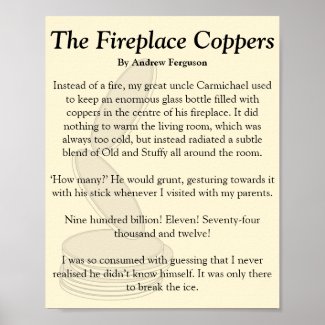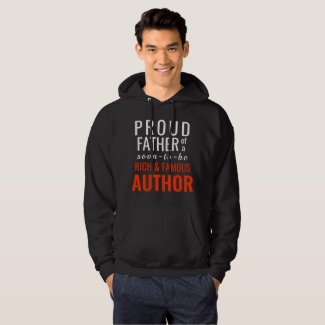5 Elements of a Great Story

Originally published 19/05/2019
Writing is like baking a cake. You need just the right ingredients in just the right measure, or else you’ll just end up with an unappetising mess. In the same way that a tasty cake should be soft but firm, sweet but not overly so, moist but not wet and covered in lots of chocolate tastefully decorated, so too, a good story will stimulate the audience emotionally and intellectually; it will thrill them as well as make them think; frighten them as well as make them laugh and it will take them on a journey which is both meaningful and enjoyable.
To accomplish this, there’s a few key ingredients you just can’t do without:
Characters
Stories don’t just have characters. Characters are the story. Therefore, well developed characters, each with their own motives and goals which the audience sympathise with and care about, are essential for a good story. A few key players you might want to include in your story are:
- A protagonist [2]. This is your main character, that key individual whom the story is actually about and with whom the audience should sympathise the most deeply (this one is mandatory. You don’t have a story without a protagonist).
- An antagonist [2]. This is your protagonist’s main opponent throughout the story. He’s not necessarily evil, or even plotting evil (though he can be). He might simply be a rival competitor in the World Tiddlywinks Championships that your protagonist needs to defeat to become the World Tiddlywink Champion. Just as long as there is a direct conflict between your antagonist and your protagonist; one which the audience cares about.
- A love interest is another common feature in much fiction. Usually there is a bit of sexual tension between your love interest and your protagonist from the outset (alternatively, unrequited attraction is a common motif). The love interest may also have some chemistry with your antagonist, thus creating the ever popular love triangle (a common motif in romance fiction). But if you are creating a love interest, just remember: no character should exist solely for the benefit another. Make sure your love interest has goals and motives of their own and a purpose for existing beyond making the protagonist swoon.
Conflict
So you’ve got a strong protagonist with firmly established goals and motives. Good for you.
Now… what’s stopping him achieving his goals? Your story will largely pivot on this question. Your character wants to do something, realises he can’t for some reason (this is your conflict!), struggles to overcome whatever it is that’s hindering him and finally succeeds.
It may be an antagonist whose goals bring them into direct conflict with the protagonist (for instance, a murderer might deliberately hide evidence from a detective, thus making it difficult for your protagonist to solve the mystery) but it could also be an inner struggle with illness, crippling self-doubt or the natural forces of nature. Whatever it is, there must be something standing between your protagonist and his ultimate goal. That’s your conflict.
Plot
This is arguably the most frustrating part of writing a story (but also one of the most important). Your plot is your basic sequence of events which form the skeleton of your story. There are lots of different approaches to plot structuring which you can Google at your leisure and decide which approach works best for you and your story.
Nevertheless, all good plots have this in common: that they progress in a logical manner from beginning to end. Something happens early on in the story to disrupt the ordinary life of your character, forcing him to do something to achieve his goal(s). This action leads to another event, leading to another action, leading to another event, progressing in a rational, cause-and-effect manner which finally concludes in a final climactic crisis event which resolves the main conflict and allows life to return to normal (though it may not be the same ‘normal’ as at the beginning of the story. e.g.: Aladdin’s ‘normal’ life started out as a single poor boy; his new ‘normal’ at the end is being married to a princess as a logical conclusion of the events that went before).
Pacing
As the author, your job is to blend fast bits and slow bits to create just the right feel for your story. This will be largely dependant on your genre, but even the most fast paced stories will still need slow bits to give the audience a chance to fully assimilate what is going on and to build a sense of anticipation. Equally, fast paced scenes (such as a good fight) are important to give the audience a bit of excitement and to relieve some of that tension you’ve been building up in the slow bits.
Some scenes can be fast paced or slow paced, depending on the effect you’re trying to create and the purpose they serve in your story. Love scenes are a good example. Fast paced narrative would make a slow and sensual love scene seem rushed (‘Jim and Jane made slow passionate love’ doesn’t quite capture the feel you’re trying to create); equally if you’re writing a moment of wild abandon between two lovers, you don’t want to bog the pacing down with talk and introspection. Use language in such a way to make the audience feel the urgency (or lack thereof) of what is happening.
Theme
I’ve spoken at some length about theme before but at the risk of repeating myself let me just say this: that an awareness of your story’s key themes will allow you to create a story with a bit of substance. All stories contain themes. They’re a natural byproduct of fiction, but they grow wild like weeds, accomplishing nothing. As an author, you have the power to cultivate your themes, to structure them and to make a really clear statement about real life through your work of fiction.
Do so, and your work will echo in the minds and the hearts of audience, challenging them, troubling them, encouraging them and stirring up their feelings long after they’ve finished reading it.
Find Andrew Ferguson on all these wonderful places:
Looking for a gift for the author or fiction lover in your life?
Check out the Penstricken Zazzle store!
Want a blog of your own? Start writing today with WordPress.com!
AUTHOR INTERVIEWS:
Unfortunately, I am unable to take on any more author interviews or solicited book reviews at this time.
You can check out our previous interviews here:
- Sharleen Nelson, author of The Time Tourists [2]
- D. Wallace Peach, author of the Shattered Sea duology [2]
- Jacob Klop, author of Crooked Souls
- H.L. Walsh, author of From Men and Angels [2]
- G.M. Nair, author of Duckett and Dyer: Dicks for Hire
- Georgia Springate, author of Beyond
- S.E. Morgan, author of From Waterloo to Water Street
- Megan Pighetti, author of Fairy-Tailed Wish [2]
- Nancet Marques, author of Chino and the Boy Scouts [VIDEO]










